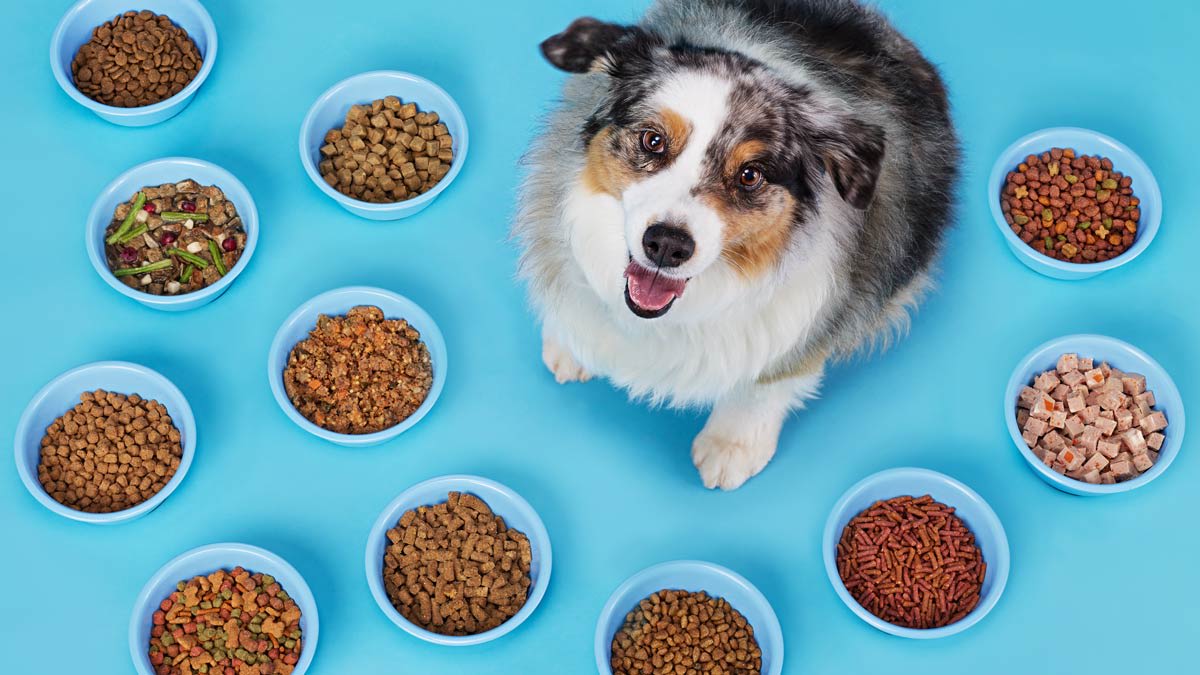What’s Really in Your Dog’s Food?

Standard recommendations don’t match the nutritional needs of every dog, which is why consulting your veterinarian is so important. For example, some very active adult dogs might thrive on higher fat levels, while dogs with certain health conditions might benefit from levels even lower than the recommended minimum amount, says Faeh, of the American Veterinary Medical Association.
Still, experts we spoke to offered some broadly applicable tips on selecting a dietary plan for your pet.
Start with the basics. If you find yourself rushing out to a grocery or convenience store because you ran out of dog food and need something quickly, choose a food with a label saying it provides a “complete and balanced” diet and meets AAFCO recommendations that are appropriate for your pet’s lifestage, says Faeh. For example, labels may include a statement saying the food is “formulated to meet the nutritional levels established by the AAFCO Dog Food Nutrient Profiles” for dogs in a particular life stage, such as “adult maintenance” for grown dogs and “growth and reproduction” or “all life stages” for puppies and pregnant or lactating dogs. Labels may also read “Animal feeding tests using AAFCO procedures substantiate that [the product] provides complete and balanced nutrition” for a particular life stage; or that the product “provides complete and balanced nutrition for [the life stage] and is comparable to a product which has been substantiated using AAFCO feeding tests.”
Foods that meet these standards won’t necessarily be a perfect food for your dog, but they’re a good place to start. In our testing, most foods did a good job meeting at least these basic standards. There are other foods that may be labeled as supplemental foods or treats, which are fine to give your dog in moderation, but should not be the majority of your dog’s diet.
Don’t overdo treats. The vast majority of dog owners give their dogs too many treats, Murphy says. In a dog’s diet, 90 percent of calories should come from meals that comprise a complete and balanced diet—and only 10 percent from treats, which do not need to meet AAFCO or other nutritional standards. To make sure you don’t overdo it, pay close attention to labels when buying treats: A 30-calorie treat may be more appropriate than a 120-calorie one, especially for a small dog.
Know your dog’s specific needs. There are plenty of reasons why the food that’s right for one dog isn’t the right fit for another. For example, Murphy says, growing dogs are going to need a puppy food. Owners of puppies whose adult weight is expected to exceed 70 pounds should look for foods specifically labeled as supporting growth of large-sized dogs, which cannot have more than a certain amount of calcium, according to AAFCO. Dogs that are gaining too much weight or have a health condition like pancreatitis might need an especially low-fat diet, Faeh says. As mentioned above, owners of copper-sensitive breeds should look into brands or prescription foods that have low copper. And if your dog has an allergy to a specific protein, such as a poultry allergy, you may want to be sure you get a food that’s not made in a factory where that protein is used, Faeh says, to avoid cross-contamination. (You could look to see whether the label says that other foods are made in the same factory or ask the company directly, or you may need to get a prescription food.)
Don’t make a change for no reason. You’ll want to change your dog’s diet if, for example, it’s not growing sufficiently or is gaining too much weight, Murphy says—issues your vet will be on the lookout for during regular checkups. And you’ll want to switch from a puppy food to a maintenance food when your dog is fully grown, she says. (While “all life stages” diets are marketed as appropriate for puppies and adult dogs, Murphy says these are basically puppy foods and probably aren’t the best choice for adult dogs.) But beyond this, once you’ve honed in on a diet that is working for your pet, you don’t need to change it unless you have a good reason, she says. There’s no one set meaning for “senior diet,” for example, and that’s not something your dog will necessarily need.
Be wary of raw food and other trendy diets. While a number of new feeding services and dietary options have emerged in recent years, these aren’t necessarily things you should adopt, experts say. The AVMA does not recommend raw food diets, and is concerned about the risks these carry for bacteria and parasites that can harm pets or people, Faeh says. (Both samples in which CR found listeria were raw food products.) The organization recommends feeding dogs foods that have been cooked or pasteurized to reduce the risks of pathogens.
You should also be cautious about adopting a home-cooked diet for your dog, she says. Even though a home-cooked meal comes from a place of love, you should confirm that your vet agrees that a home-cooked diet is adequately balanced, she says—it’s hard to be sure you’re delivering all the nutrients a dog needs. And if you do go that route, “cook the meat,” she says.
Other options like grain-free diets have most likely emerged for marketing reasons, Murphy says, “largely for the idea of wanting to feed a dog like they were a wolf out in the wild.” While some dogs might benefit from grain-free foods, she says, there’s no specific reason a dog would need a grain-free diet, and plenty of research has shown that dogs digest grains well.
Do your research. To calculate your dog’s calorie needs, Murphy suggests looking at the Pet Nutrition Alliance’s online calorie calculator.
And beyond reviewing CR’s chart below, guidelines from the World Small Animal Veterinary Association can also help you evaluate different dog food brands. These tips include checking to see whether a brand employs a nutritionist or trained formulator, meets the guidelines of AAFCO or its European counterpart (FEDIAF), has studies evaluating the food, displays a label identifying its food as a “complete” diet, and matches the needs of your individual pet. WSAVA also advises seeing whether you can contact the company to ask questions, and investigating who actually makes the food—is it the company itself or a third-party supplier? (A company likely has more control over a factory it owns itself.) The Pet Nutrition Alliance collects and publishes much of this information in a free annual report. But companies should offer information like this online or have a contact number where you can ask, Murphy says: “If you can’t get answers or aren’t comfortable, you have so many other options.”
Source link











